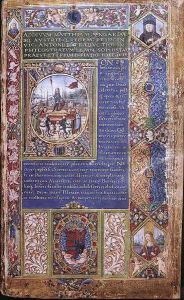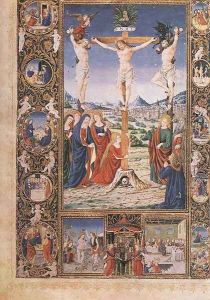Attavante Degli Attavanti Paintings
Attavante Degli Attavanti, also known as Attavante di Michele, was an Italian illuminator born in 1452 in Florence, Italy. He was one of the most celebrated manuscript illuminators of the Renaissance period. Attavante's work is characterized by its intricate detail, vibrant colors, and incorporation of gold leaf, which reflected the opulent tastes of the time.
Attavante was trained in the Florentine tradition of illumination, which was renowned across Europe for its high quality and innovative designs. Throughout his career, he worked for a variety of high-profile patrons, including members of the Medici family in Florence, one of the most powerful and influential dynasties of the Renaissance. He was also commissioned by foreign dignitaries and members of the Church, indicating the wide-reaching appeal and recognition of his talent.
His contributions to the art of illumination include several masterpieces, such as the lavish decorations of choir books, breviaries, and other liturgical texts. His style evolved over time to include elements of perspective and volumetric figures influenced by the emerging trends of the Renaissance, which were being pioneered by artists such as Leonardo da Vinci and Michelangelo. Attavante's work often featured elaborate borders filled with botanical motifs, detailed narrative scenes from the Bible, and portraits of saints and patrons.
One of Attavante's most notable works is the illumination of the 'Sforza Hours', which was originally started by Giovan Pietro Birago for Bona Sforza but was left incomplete upon the artist's death. Attavante was commissioned to finish this work, which showcases his skill in harmoniously blending his own style with that of Birago's.
Attavante Degli Attavanti’s legacy is preserved in numerous collections across Europe, including the Vatican Library and the British Library. His work not only reflects the religious fervor of the time but also exemplifies the transition from the medieval tradition of manuscript illumination to the Renaissance emphasis on humanism, naturalism, and classical themes. Attavante passed away in 1525, leaving behind a body of work that continues to be studied and admired for its artistry and craftsmanship.

